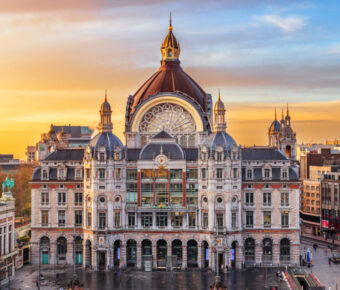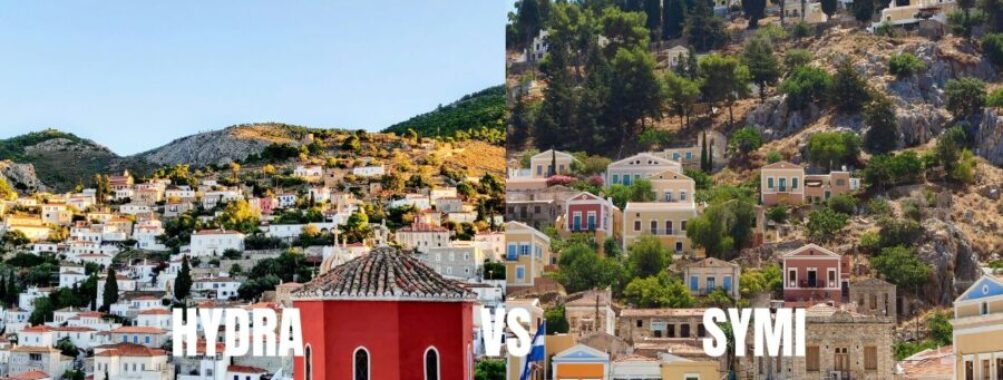
Hydra vs Symi: 7 Key Differences for Your 2025 Greek Island Escape
Picking between Hydra and Symi? It’s a classic Greek island dilemma, but honestly, it’s not as tough as it seems. If you want a car-free island with elegant mansions and a super quick Athens getaway, Hydra’s your spot. If you’re after colorful harbors, authentic village energy, and a quieter pace near Rhodes, Symi wins. They’re both charming, but the vibe is worlds apart.
On Hydra, you’ll wander cobbled lanes, dodge donkeys instead of taxis, and sip coffee by a harbor that looks straight out of a movie set. Symi greets you with pastel houses stacked on steep hills, a working fishing community, and those legendary staircases—your legs will complain, but your eyes will thank you.
I’ve bounced between both, and honestly, it comes down to the trip you’re craving. Are you more about stylish ease or that rustic, lived-in authenticity? Your answer shapes the whole adventure.
Table of Contents
- Key Takeaways
- Hydra vs Symi: Quick Comparison
- Location and Accessibility
- Vibe and Atmosphere
- Best For: Who Should Visit Each Island
- Island Highlights and Unique Experiences
- Hydra’s Notable Sights and Activities
- Symi’s Must-See Attractions
- Beaches and Natural Beauty
- Top Beaches on Hydra
- Top Beaches on Symi
- Culture, History, and Local Life
- Architectural Charm and Heritage
- Festivals and Local Traditions
- Getting There and Island Hopping Connections
- Ferry Routes and Schedules
- Nearby Islands to Explore
- Accommodation, Dining, and Practical Tips
- Where to Stay: Hydra vs Symi
- Local Cuisine and Dining Experiences
- Travel Tips for Each Island
- Frequently Asked Questions
- What unique cultural experiences can travelers anticipate when visiting Symi over Hydra?
- How does the culinary scene in Hydra compare to that of Symi for food enthusiasts?
- Can you highlight the differences in architecture and historical sites between Hydra and Symi?
- What are the hidden gems for nature lovers in Symi and Hydra that are off the beaten path?
- In terms of local festivities and traditions, how do Hydra and Symi differ throughout the year?
- Could you shed light on the transportation options available for navigating between Hydra and Symi?
- Book Your Dream Experience
- More Travel Guides
Key Takeaways
- Hydra is all about car-free charm and easy Athens access
- Symi brings colorful harbors and real local life
- The experiences couldn’t be more different
Hydra vs Symi: Quick Comparison
Hydra and Symi both deliver that small Greek island magic, but the details—location, atmosphere, even the kind of travelers they attract—set them apart. One sits close to Athens, tucked in the Saronic Gulf. The other? Deep in the Dodecanese, brushing up against Rhodes. Two totally different adventures.
Location and Accessibility
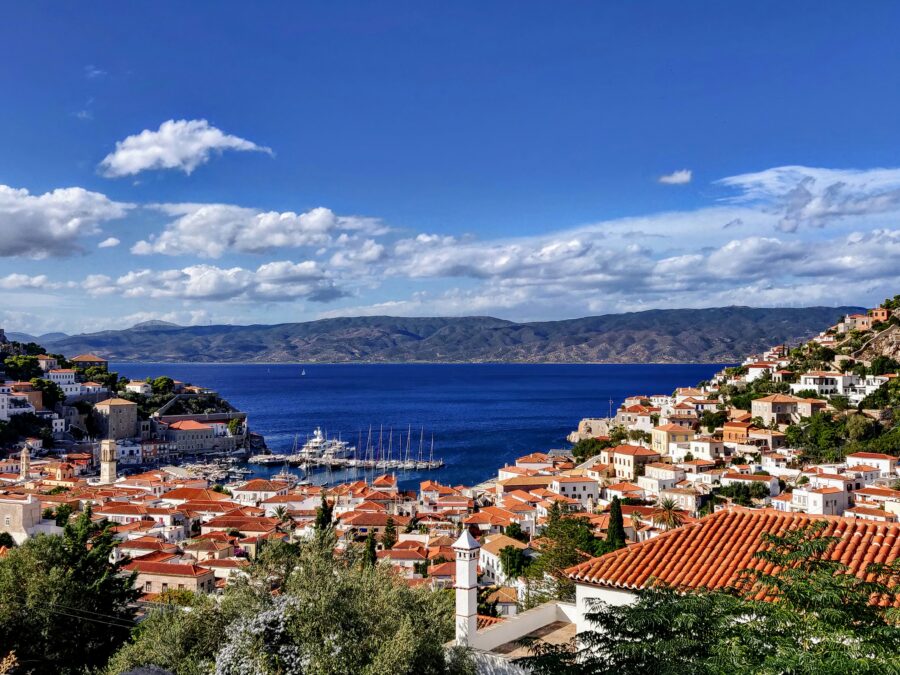
Hydra belongs to the Saronic Gulf islands, which makes it one of the most painless weekend getaways from Athens. Hop on a ferry from Piraeus, and in about 90 minutes, you’re there. No airports, no cars—just a quick boat ride. No wonder Athenians love it for those spontaneous escapes.
Symi sits in the Dodecanese islands in the southeastern Aegean Sea. Getting there is more of a journey. Most folks fly into Rhodes, then catch a ferry for an hour or so. Sure, you could technically ferry all the way from Athens, but that’s a 13-hour marathon—hardly anyone does it.
So if you want to keep things easy, Hydra’s the winner. But if you’re game for a bit of a trek, Symi rewards you with peace and fewer crowds.
Vibe and Atmosphere
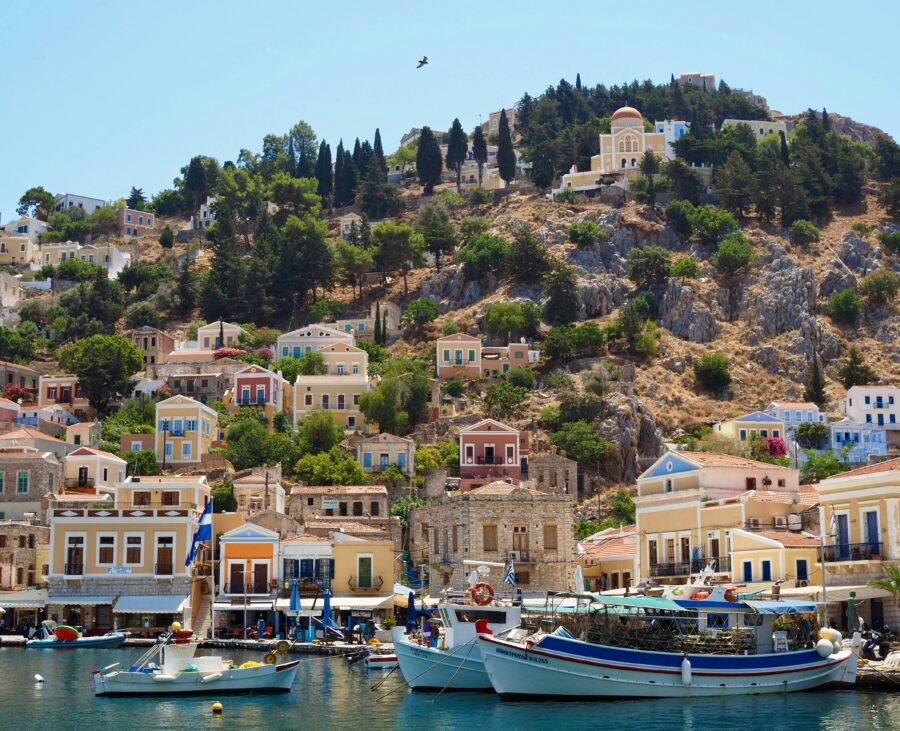
Hydra gives off a polished, almost glamorous energy. Cars aren’t allowed, so you’ll walk, ride donkeys, or hop water taxis. The port town’s lined with elegant stone mansions, cute boutiques, and cafés that look straight out of a design magazine. It’s upscale but not stuffy. And yeah, you’ll probably spot a few artists or off-duty Athenians soaking it all in.
Symi feels softer and way more colorful. Its harbor, Gialos, is famous for those pastel neoclassical houses climbing up the hill. The pace is slow, and while Rhodes day-trippers show up, evenings get quiet once the boats disappear. Symi’s beaches, like Saint George Bay and Nanou Beach, are mostly reached by taxi boat, which makes the whole thing feel a tad adventurous.
Hydra? Chic and social. Symi? Picturesque and tranquil. Both are stunning, just in totally different ways.
Best For: Who Should Visit Each Island
Pick Hydra if you’re short on time, want that easy Athens access, or love a blend of culture, history, and a bit of luxury. It’s perfect for weekends, romantic getaways, or even a family trip—if you don’t mind a lot of walking.
Symi is for you if you’re after a slower pace and don’t mind planning ahead. It’s ideal for folks who love exploring by boat, swimming in hidden coves, and hanging out in colorful villages. Foodies will love the famous shrimp and the old-school tavernas.
So, Hydra for convenience and chic energy. Symi for epic scenery, quiet, and that “far from Athens” feeling you just can’t fake.
Island Highlights and Unique Experiences
Hydra and Symi might both be small Greek islands, but their personalities are night and day. One leans into history and car-free charm; the other dazzles with pastel harbors and hidden religious sites tucked into quiet coves.
Hydra’s Notable Sights and Activities
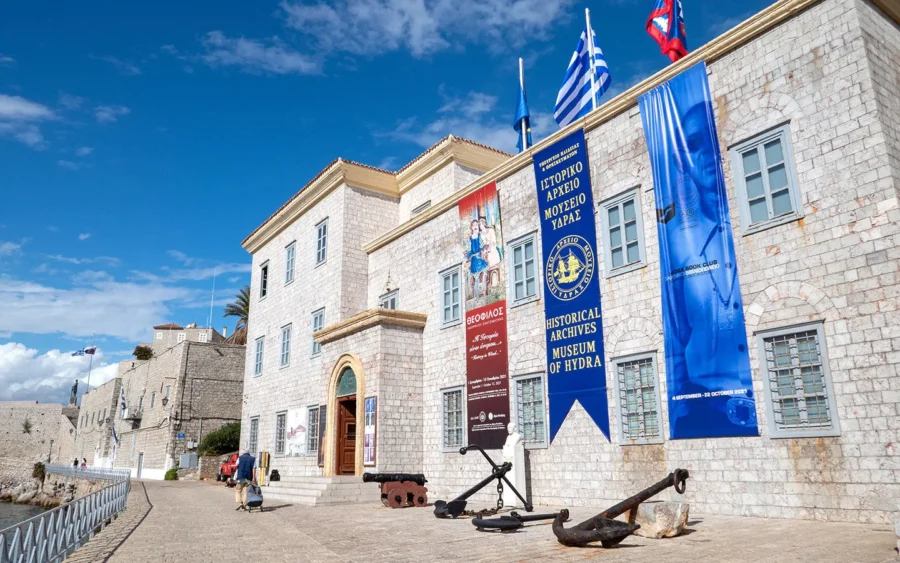
The first thing that hits you on Hydra? The silence. No cars, no scooters—just donkeys’ hooves echoing on stone. It’s one of those rare places where you genuinely feel time slow down. Walking everywhere becomes part of the experience.
Hydra Town itself feels like a living museum. Those 18th-century mansions—once owned by wealthy shipowners—now house art galleries and museums. The Historical Archive Museum is a must if you’re into naval history, but honestly, just wandering the backstreets is where the magic happens.
If you love hiking, you’re in luck. Trails wind up to the old Kastro for killer sea views, or along the coast to tiny beaches like Vlychos. Don’t forget water—shade is rare, and the sun doesn’t mess around.
Want something more structured? There are guided tours that mix history, food, and even boat rides. Hydra might lack sandy beaches, but those rocky platforms with ladders into the sea? Honestly, they’re perfect on a blazing summer day.
Symi’s Must-See Attractions
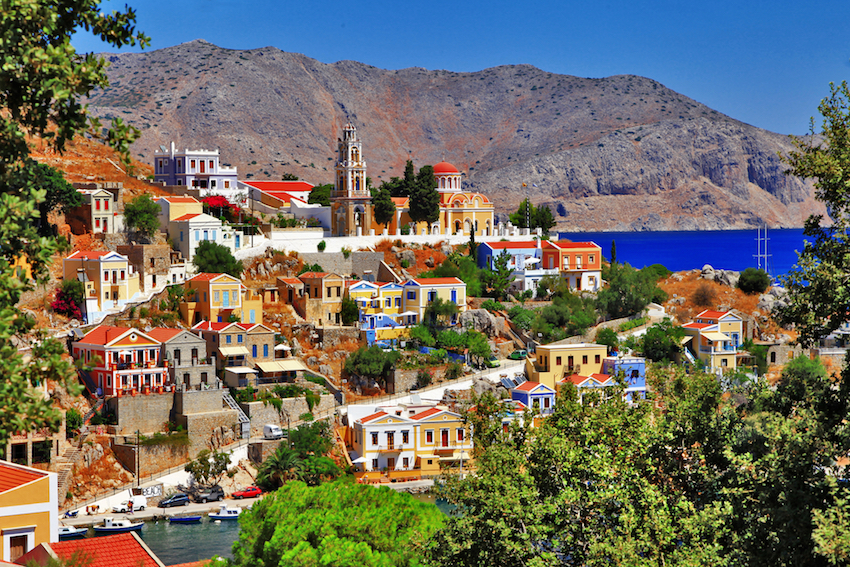
Symi just hits different. When your ferry pulls into Symi Town, those pastel houses stacked up the hill look almost unreal. It’s easily one of Greece’s prettiest harbors, and you’ll probably lose track of time just hanging out at waterfront cafés.
Tackle the Kali Strata, a staircase with more than 500 steps, and you’ll reach Chorio, the old village. It’s a sweaty climb, but the views are worth every step. Along the way, you’ll spot neoclassical mansions that really set Symi apart.
The Panormitis Monastery, dedicated to Archangel Michael, is a big deal here. Even if you’re not religious, the frescoes and peaceful courtyard are worth the trip. Boat taxis can take you there, or you can hop on day trips that stop at beaches along the way.
When it comes to beaches, Nanou and Agia Marina are standouts. Clear water, pebbled shores, and a totally chill vibe—you’ll want to stay all day. And do not skip the Symi shrimp. Tiny, crispy, and dangerously addictive, especially with a cold beer by the sea.
Beaches and Natural Beauty
Hydra and Symi both sit in the Aegean, but their coastlines couldn’t be more different. One’s all about pebbly, lively shores near town; the other tempts you with wild coves and dramatic backdrops.
Top Beaches on Hydra
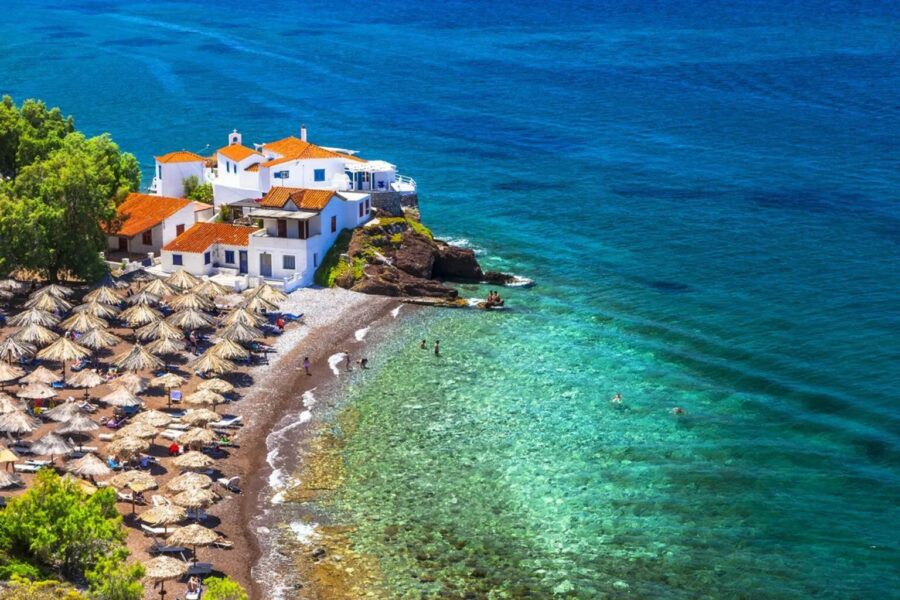
Forget sandy stretches—Hydra is all about pebble beaches and rocky swimming spots close to Hydra Town. That’s the charm: finish your coffee, and you’re swimming ten minutes later.
Spilia and Hydroneta are classic. Both have rocky platforms with ladders straight into the sea. If you love diving into deep blue water, you’ll be happy here—just maybe not the best for little kids.
Craving a more traditional beach? Vlichos Beach is a quick water taxi ride away. It’s pebbly, family-friendly, and lined with tavernas. Mandraki Beach, just east of town, is rare for Hydra—it actually has sand, loungers, umbrellas, and a beach bar.
For more seclusion, check out Bisti and Agios Nikolaos. You’ll need a boat, but the clear water and peace are worth the effort. Hydra’s beaches are small and easy to reach, pairing perfectly with the island’s car-free, laid-back feel. You’ll probably spend more time swimming off rocks than building sandcastles, and honestly, that’s part of Hydra’s magic.
Top Beaches on Symi
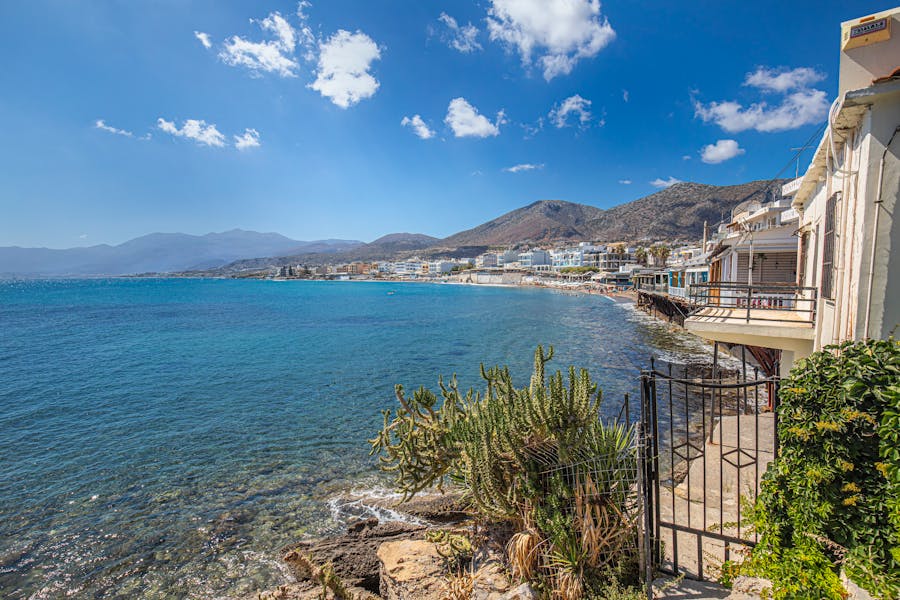
Symi’s coastline feels wild and rugged, with coves framed by cliffs and water so clear you’ll want to snorkel all day. Most beaches are only reachable by boat, which keeps things blissfully quiet—even in peak season.
Saint George Bay sticks with you. Dramatic cliffs behind, turquoise water ahead—it’s a showstopper. You’ll need a boat, but trust me, it’s worth it.
Closer to town, Agios Nikolaos Beach balances organized facilities with a mellow vibe. Sunbeds and umbrellas are there, but it never feels crowded. Families love it since it’s easy to reach.
For a more local feel, Agios Emilianos and Nanou Beach are peaceful, pebbly, and ridiculously clear. Symi’s beaches aren’t about comfort—they’re all about the setting. Don’t expect wide sandy stretches.
Compared to Hydra, Symi’s beaches feel wilder and more remote. You’ll spend more time on boats, hopping from cove to cove, but honestly, that’s half the fun. The island serves up some of the most photogenic swimming spots in the Dodecanese, like the ones you’ll find in this guide.
Culture, History, and Local Life
Both Hydra and Symi have centuries of tangled history, but they’ve evolved in totally different directions. One feels frozen in time, fiercely preserved. The other mixes seafaring grit with traditions that still shape daily life.
Architectural Charm and Heritage
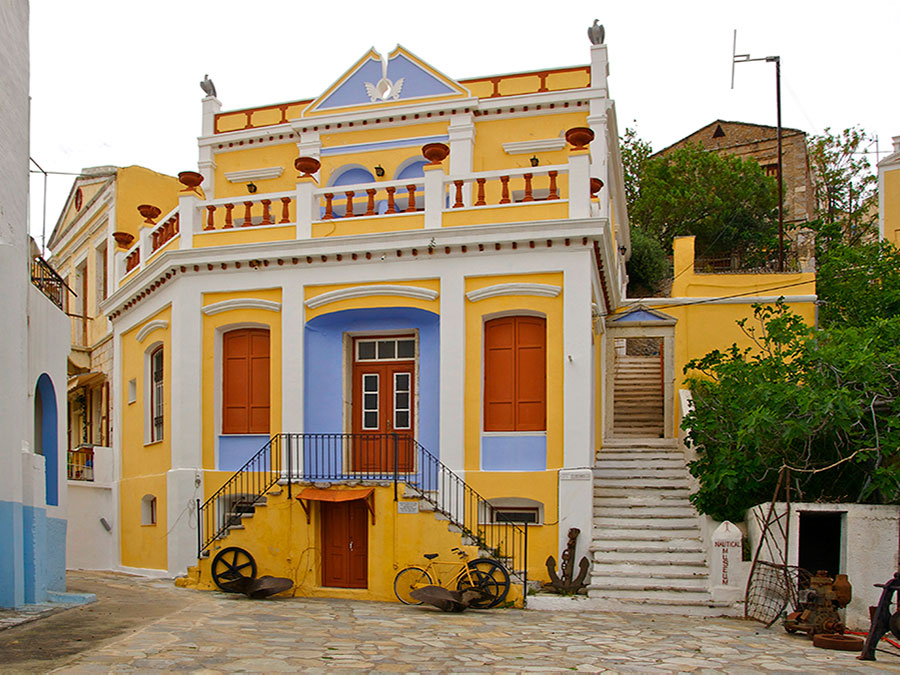
Hydra stands out right away—no cars, just cobbled lanes lined with stone mansions built by shipowners who made it big. Donkeys and water taxis still move people and goods, which really makes it feel like you’ve stepped back a couple of centuries. The architecture is restrained, uniform, and fiercely protected, giving Hydra its timeless appeal.
Symi, by contrast, greets you with rows of pastel neoclassical houses climbing up from the harbor. Symi Town is almost theatrical—colorful facades, red-tiled roofs, and a sense of drama. Many homes date back to the island’s sponge-diving and boat-building heyday. Where Hydra keeps things muted, Symi bursts with color and warmth.
If you’re a history buff, the Naval Museum in Symi dives into the island’s maritime past. Hike up to Panormitis Monastery, and you’ll get both sweeping Aegean views and a hit of culture. Hydra doesn’t have a single showpiece monastery, but its preserved homes and art museums tell the story of its once-elite residents.
Festivals and Local Traditions
Hydra leans into arts and intellectual gatherings. Painters and writers have flocked here for ages, and you’ll still stumble on exhibitions, concerts, and creative events throughout the year. The scene is quieter, more reflective—less about big religious festivals, more about creative energy.
Symi, though, is all about community and tradition. The Panormitis Festival in November is the big one. Pilgrims arrive by boat, and the island comes alive with processions, music, and shared feasts. It’s not just for tourists—locals take it seriously, and you can feel the pulse of the place.
Other feast days light up the villages with dancing, food, and live music. I once stumbled into a festival in Symi Town, and before I knew it, a smiling grandmother pulled me into a circle of dancers. That kind of welcome? It’s rare. Hydra is beautiful, but Symi’s festivals make you feel like a guest, not just a visitor.
Getting There and Island Hopping Connections
Hydra and Symi sit in totally different corners of Greece, so getting there—and hopping to other islands—plays out differently. Hydra sits with the Saronic Gulf crew near Athens, while Symi is tucked beside Rhodes in the Dodecanese.
Ferry Routes and Schedules
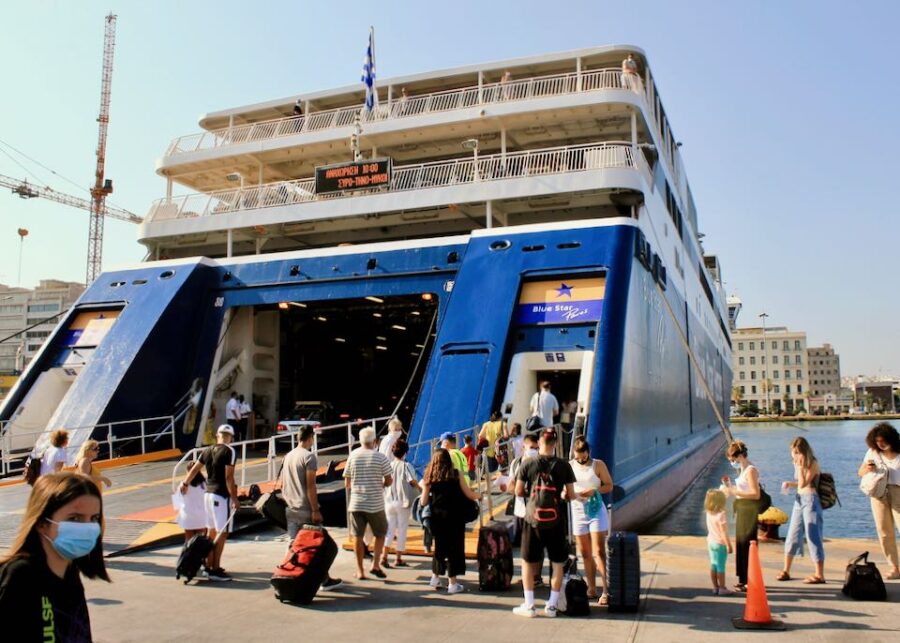
Hydra’s one of the easiest Greek islands to reach if you’re starting your trip in Athens. Ferries zip out of Piraeus port several times daily, and you’ll usually step off on Hydra after just 1.5 to 2 hours. There’s no need for a car—Hydra’s famously car-free—so you’ll walk everywhere or catch the occasional water taxi.
Getting to Symi takes a bit more effort. You’ll almost always fly into Rhodes first (it’s got the nearest international airport), and from there daily ferries head to Symi. Fast boats get you there in about an hour; bigger ferries take closer to 90 minutes. Blue Star Ferries and Dodekanisos Seaways run most of these trips.
If you’re coming from farther afield—maybe London or New York—definitely check for flexible cheap flights. Personally, I find it easier to book into Rhodes and then hop over to Symi, while Hydra’s a breeze if you’re already in Athens.
Nearby Islands to Explore
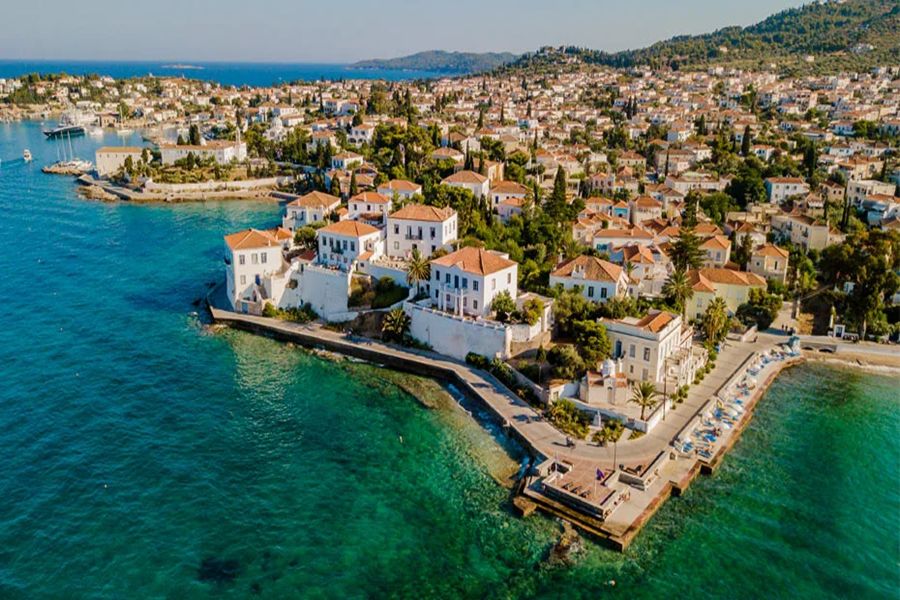
Hydra’s a great base for short hops around the Saronic Gulf. You can pair it with Spetses, Poros, or Aegina for a couple of days. These islands sit close together, and regular ferries make island-hopping easy. It’s perfect if you want to avoid spending your whole vacation on boats.
Symi’s neighbors are a bit more spread out, but wow, the choices are good. Ferries connect you to Kos, Patmos, or Nisyros, and Rhodes is basically next door. If you’ve got extra time, you can even connect to the Cyclades or Crete—though that’s more of a trek and usually means changing boats in Rhodes.
Feeling adventurous? You could combine Symi with the Ionian Islands like Corfu or Paxi, but you’ll need a domestic flight first. Honestly, sticking to the Dodecanese chain is simpler and just as rewarding. If you’re flexible, tools like KAYAK help you mix ferries and flights into one plan.
Accommodation, Dining, and Practical Tips
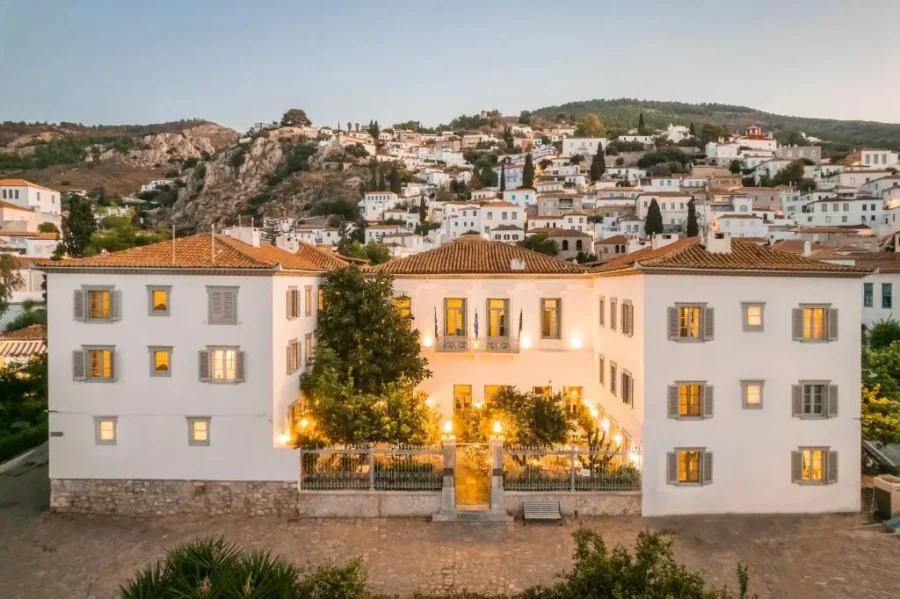
Hydra and Symi both lean into small-scale stays and family-run tavernas rather than big resorts, but the energy’s different on each. You’ll want to think about how easy it is to get around, where to eat, and a few tricks to make your trip smoother.
Where to Stay: Hydra vs Symi
Hydra’s car-free, so most people stay right in Hydra Town (the port). It’s practical since you’re close to ferries, shops, and restaurants. Most hotels are small boutique spots or old mansions turned guesthouses. Orloff Boutique Hotel and Mistral Hotel really stand out for their charm and warm service. If you want to compare more options, check booking.com.
If you’re after a quieter vibe, Kamini village is just a short walk along the coast. Families often book into Phaedra Hotel, while couples seem to love Mandraki Beach Resort for its seafront views.
Symi mixes neoclassical houses-turned-guesthouses with cozy boutique hotels. Most folks stay in Symi Town near the harbor, where pastel buildings line the waterfront. If you’re craving more peace, Panormitis or Pedi Bay have simpler lodgings with lovely sea views. Symi definitely feels more spread out than Hydra.
Local Cuisine and Dining Experiences
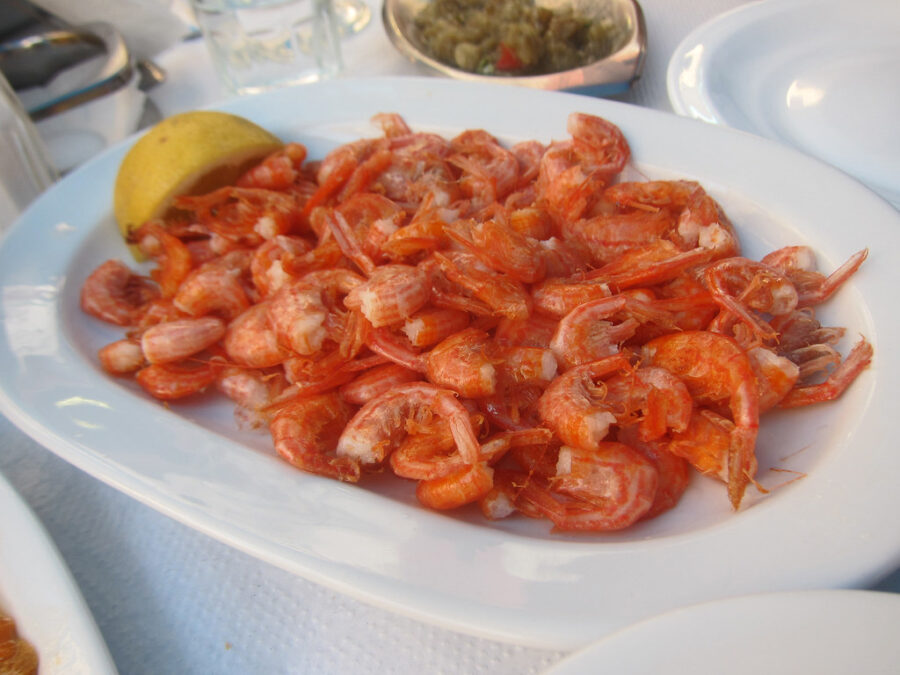
On Hydra, eating out is all about traditional Greek tavernas. You’ll find fresh seafood right by the harbor, grilled meats, and meze plates. Some of my best meals have been at tiny family-run places tucked away in back alleys, where the menu depends on whatever the fishermen brought in that morning.
Symi’s famous for its Symi shrimp—tiny, crunchy, and honestly addictive, especially with a squeeze of lemon. You’ll spot more Dodecanese-style dishes here, with a hint of Turkish influence. Tavernas in Symi Town serve right on the waterfront, which makes dinner feel extra special as the sun goes down.
Both islands keep things casual, so there’s really no need to dress up. Hydra has a few more upscale options, but Symi wins for seafood variety. Either way, you’ll eat really well if you stick to local tavernas and skip the tourist traps.
Travel Tips for Each Island
Hydra’s biggest quirk? No cars. You’ll walk everywhere, so bring comfortable shoes. If your hotel’s up the hill, brace yourself for a climb—or hire a donkey to carry your luggage. For convenience, luggage storage services are handy if you arrive before check-in and want to roam hands-free.
Symi’s easiest to reach from Rhodes—just 90 minutes by ferry. Coming from Athens is a much longer haul. Ferries dock at Symi Town, and from there you can grab small boats or taxis to reach outlying beaches and villages.
I always pack some trusty travel gear like a lightweight daypack and a refillable water bottle. Summers get seriously hot, especially in Symi where shade is rare. If you’re island-hopping, check ferry schedules ahead of time—routes aren’t always daily.
Frequently Asked Questions
Hydra and Symi might both be small Greek islands, but they couldn’t feel more different. One leans into maritime history and stone mansions, while the other’s all about color, steep hills, and old traditions. Food, festivals, and even just getting around—honestly, they’re worlds apart.
What unique cultural experiences can travelers anticipate when visiting Symi over Hydra?
On Symi, you’ll still see how sponge diving shapes the island’s identity. Small museums and family-run shops share the story, and the harbor looks like it leaped out of a postcard with its pastel neoclassical houses stacked above the water.
Hydra’s vibe is more about naval history and its reputation as a retreat for artists and writers. You’ll stumble into galleries inside old mansions and maybe even find spots where famous painters once stayed. Without cars, daily life just feels slower and more traditional.
How does the culinary scene in Hydra compare to that of Symi for food enthusiasts?
Hydra’s food scene is straightforward and satisfying. There are plenty of tavernas serving grilled fish, meze, and hearty stews. A couple of upscale restaurants cater to visitors, but Hydra isn’t really a “foodie” hotspot in the trendy sense.
Symi, though, brings a bit more flair. The island’s known for its “Symi shrimp”—tiny fried prawns, eaten whole, and they’re everywhere. The seafood and Dodecanese flavors make meals here feel more unique than Hydra’s offerings.
Can you highlight the differences in architecture and historical sites between Hydra and Symi?
Hydra’s all about stone mansions built by wealthy shipowners back in the 18th and 19th centuries. They’re grand, fortress-like, and give the island a stately, almost uniform look. Wandering Hydra Town really does feel like stepping back in time, especially with those cobbled lanes and the total lack of cars.
Symi goes in the opposite direction: colorful and vertical. Houses climb steep hillsides in soft yellows, pinks, and blues. According to Greek Travel, it’s not unusual to climb a hundred steps just to reach someone’s front door. The architecture feels playful and Mediterranean, a real contrast to Hydra’s more austere style.
On Hydra, you can follow old mule paths that lead up into the hills and end at quiet monasteries. The trails are peaceful, with big sea views, and you’ll often have them to yourself. I once spent three hours hiking and barely saw anyone.
Symi hides secluded beaches you can only reach by boat or on foot. Agios Emilianos is a favorite—almost untouched. If you like hiking, inland trails wind through pine forests and past old chapels that most tourists never even hear about.
In terms of local festivities and traditions, how do Hydra and Symi differ throughout the year?
Hydra’s Easter celebrations are legendary, especially the Good Friday procession where locals carry an icon right into the sea. It’s pretty moving, and everyone turns out for it. Summer brings art and music festivals that attract an international crowd.
Symi’s festivals run deep with local traditions. The biggest is the Panormitis Monastery celebration in November, drawing pilgrims from all over the Dodecanese. You’ll also stumble upon smaller village feasts with dancing and food—these feel genuinely community-driven.
Getting from Hydra to Symi isn’t exactly a breeze. There’s no direct ferry between these two dreamy islands, which honestly surprises a lot of travelers.
You’ll have to route yourself through places like Piraeus, Mykonos, or maybe Kalymnos. According to Rome2Rio, the journey—including all the transfers—can stretch past 14 hours. Not ideal, but hey, it’s part of the adventure, right?
On Hydra, forget about cars—seriously, they’re not allowed. You’ll end up walking everywhere or maybe hopping on a donkey if you’re feeling a bit old-school.
Symi gives you a bit more freedom with some roads and taxis, but honestly, many of the magical corners still demand either a boat ride or a willingness to wander on foot.
Both islands really invite you to slow down. Sure, the trek between them takes patience, but maybe that’s the point.



